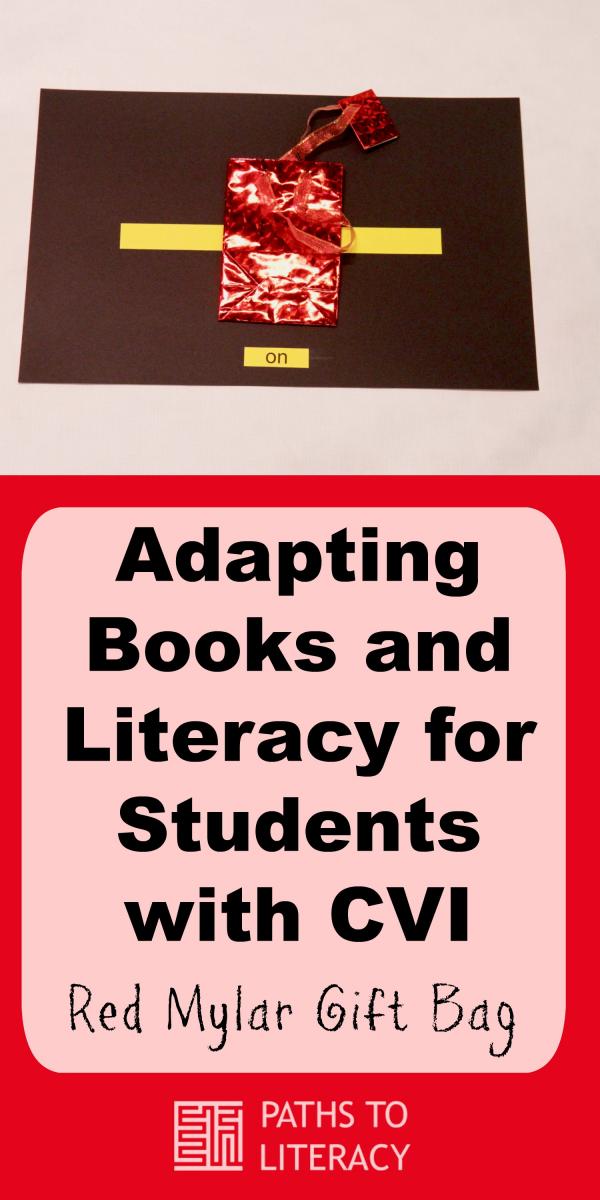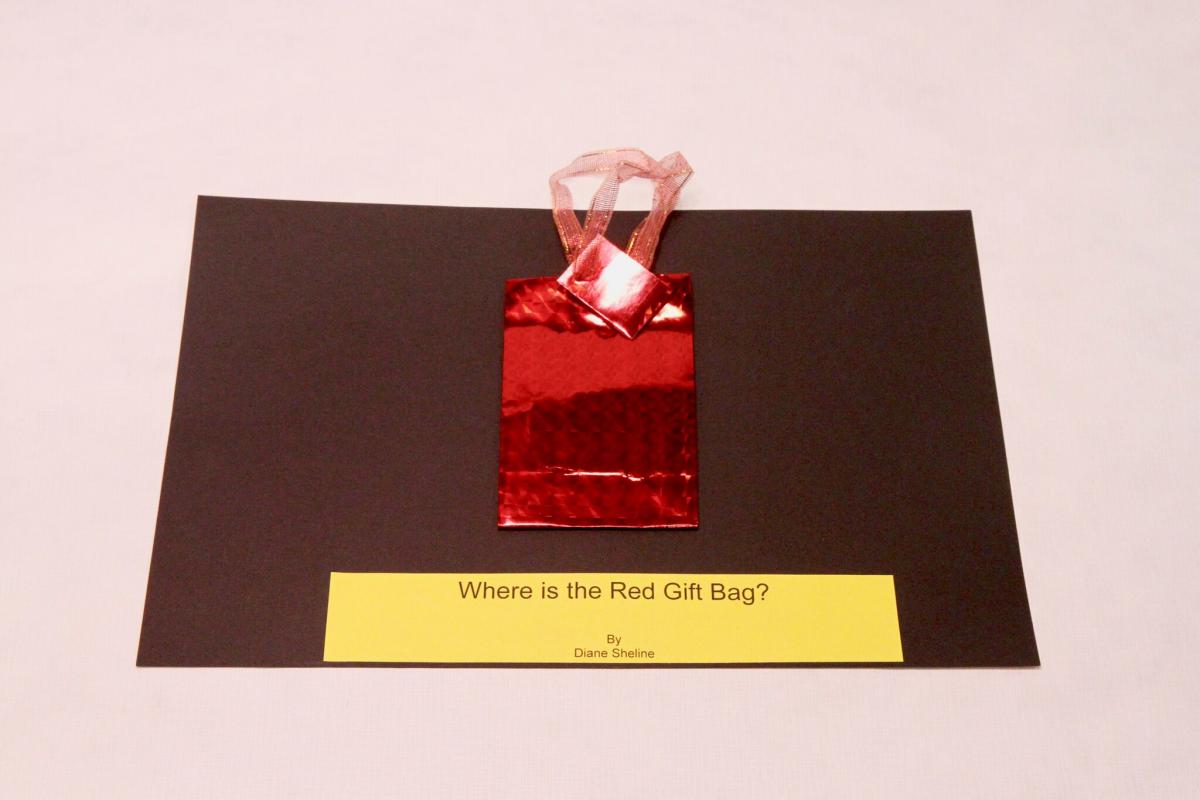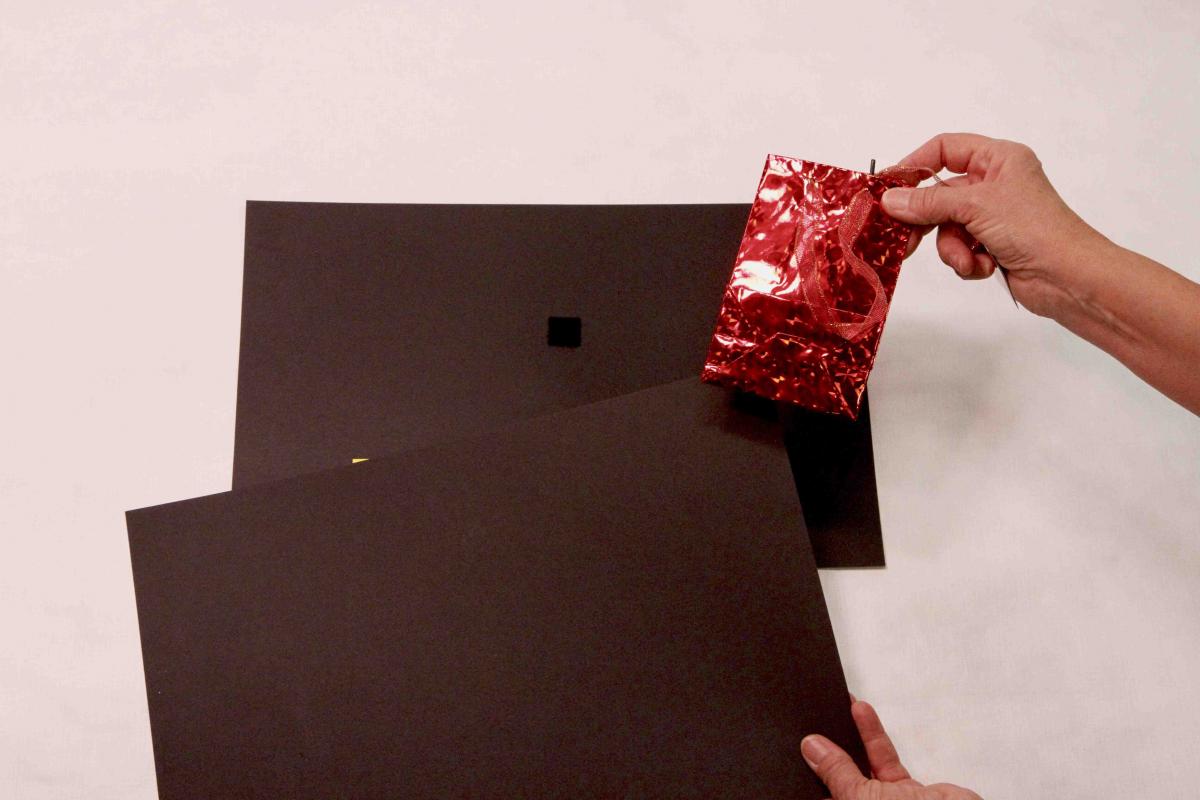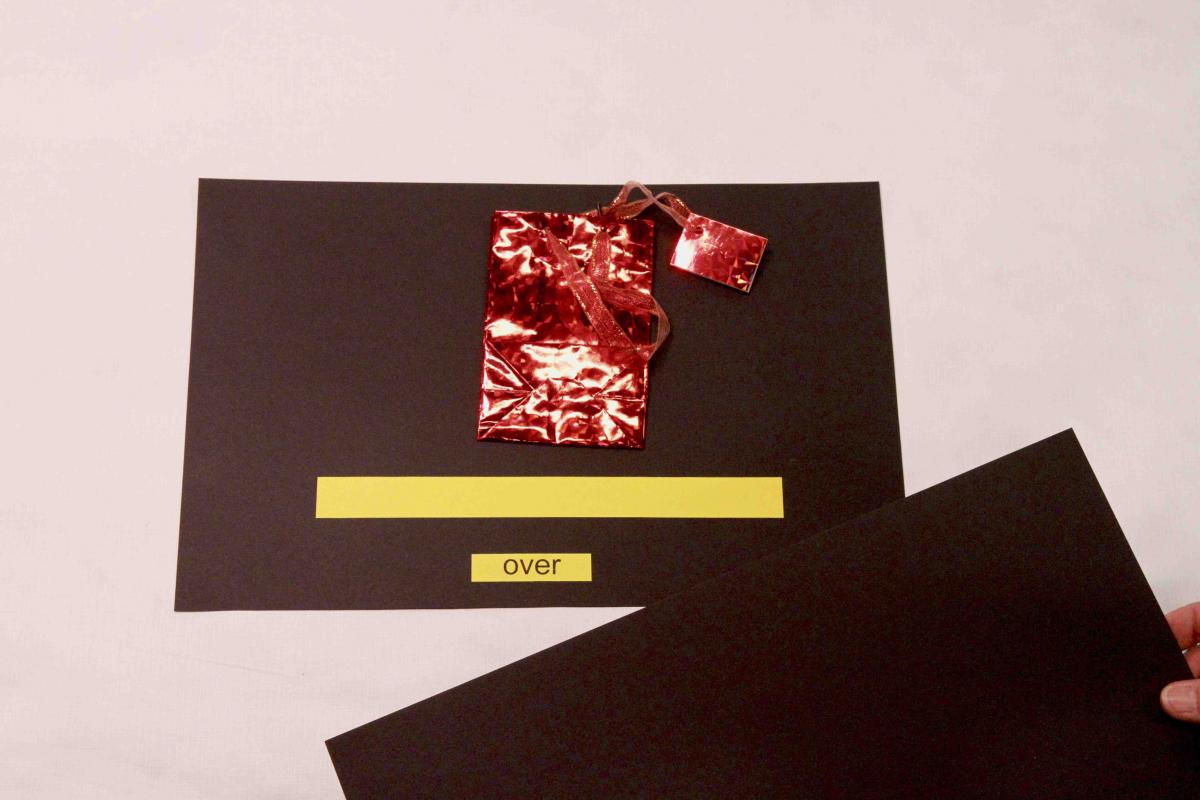Where is the Red Gift Bag?
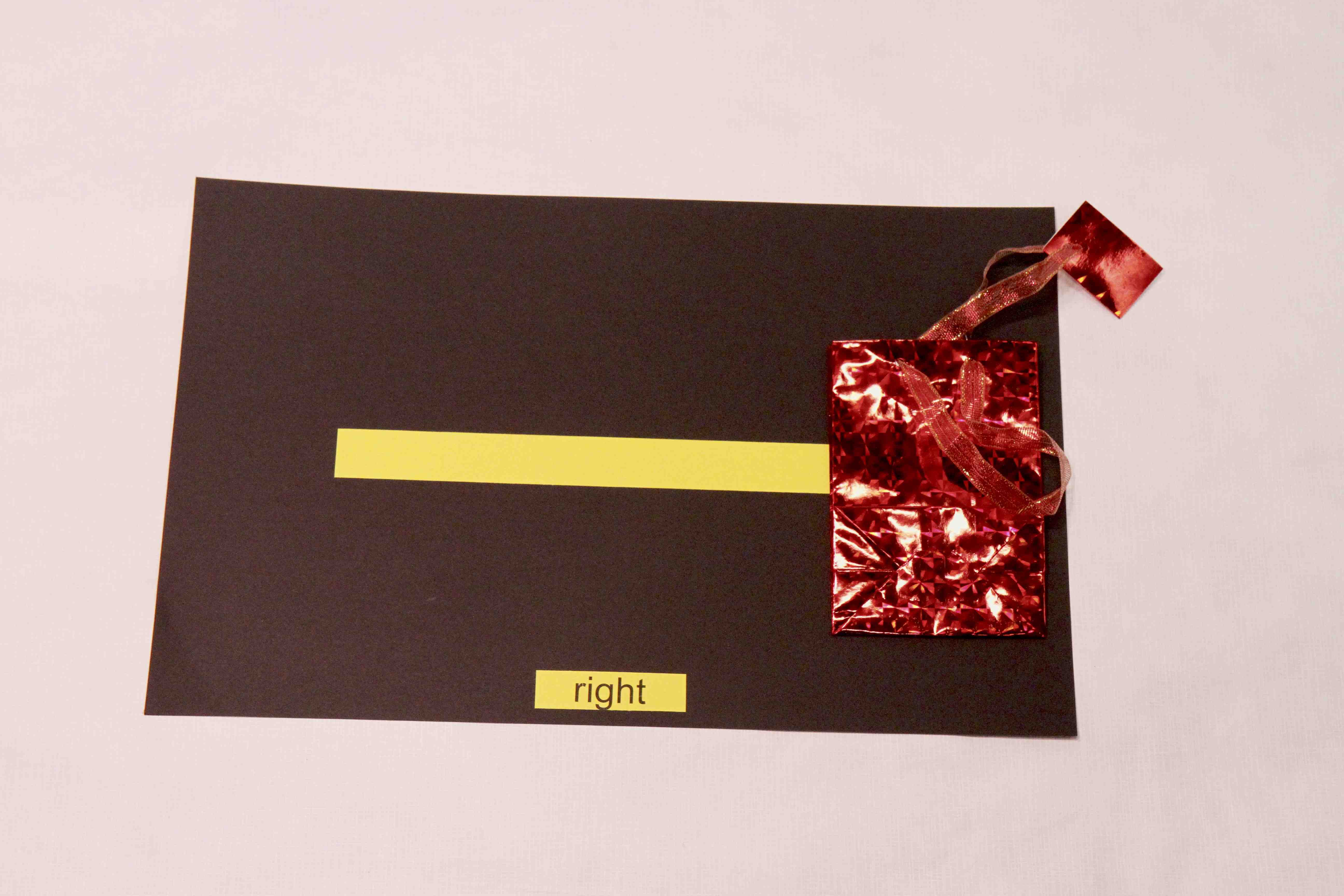
This book is one of the examples shared showing how to adapt books for children with cortical visual impairment (CVI). Please begin by reading the introductory information:
- Literacy for Children with CVI: Overview and Implications for Different Phases
- Guidelines for Modifying Books for Students in Phases I, II, and III
- Adapting Books and Literacy for Students with CVI
- General Materials Used to Adapt Books for Children with CVI
The book “Where is the Red Gift Bag?” was developed for a student who was just beginning to use vision (Phase I on the CVI Range). During the Parent Interview, prior to my evaluating this child, her perceptive mother noted that the only target she looked at was a red mylar gift bag. It has been my experience that parents are usually very accurate in their reporting of what their child will look at and indeed, this child did visually attend to a red mylar-like gift bag (it was the only target this child initially glanced at). Because it was the holiday season and the mother wanted gift ideas, I helped to make this book for her child.
Because this child had a long latency period and needed a strictly controlled environment, we did not punch or bind the pages. We wanted to present each page individually, one at a time, and give plenty of wait time so the child could respond. We also wanted to lift the pages up, bringing them into the child’s field of view. To do this, we used an All-In-One Board (black, Velcro compatible side) and placed Velcro on the back of each page, so that each page would “stick” to the All-In-One Board. By presenting individual pages on the Board, we could position the materials in her best field of view and bring the board close, within 18 inches of her face.
This child also benefited from movement, which was provided in part by the reflective quality of the red mylar, in addition to the physical movement of the bag itself. Keeping the bag separate from the page, we used Velcro again (on the page and on the back side of the bag), and as the story was told, we brought the bag in from the child’s preferred side, slowly moving it into position and attaching it onto the designated spot on the page.
The story is about a little red mylar gift bag that is “above”, “below”, “to the right”, “to the left” and “on” a line. Although these positional concepts were more advanced than the developmental level of this child, her goals when using this book were to visually locate the target and track its movement to the location on the page (not understand the positional words). Wording and concepts can be adjusted for individual needs.
In addition, because competing auditory input was distracting for this child as she attempted to use her vision, we first presented the gift bag/target (separated from the page) in her near, preferred visual field, then slowly moved it into position and attached it to the page. Once the child glanced at or looked at the target, we THEN said, “You are looking at the red, rectangular shaped bag with the tag. It is under the yellow line”. Part of the story line, or script, for each page always noted 2 to 3 salient features or visual qualities that described the red mylar gift bag.
Occasionally, we found that this child needed a “jump start” to begin using her vision. When this happened, we often used “SpotLIGHTing Techniques” and spotlighted the mylar gift bag with a high lumen flashlight (300 to 1,000 lumens or >), being careful that we did not create glare or a harsh reflection.
It should be noted that there is print on each page and when we first started using this book with the student, we needed to use Blocking Techniques (which helped to reduce the “visual clutter” in the array). We used a large sheet of heavy black paper to cover the wording, until the student could tolerate having the positional word/word strips on each page, in addition to the gift bag.
We later purchased many red mylar gift bags, cut them apart and attached strips and pieces to other targets we hoped this student would look at. For example, by attaching a strip of the reflective paper around her cup, she was more motivated to search for it.
Materials
-
Red Mylar Gift Bags (I use 4” X 6” size); these often come in a set of 3 at The Dollar Store
-
Red chenille stems or pipe cleaners OR strip of yellow paper
-
For a full list of materials, see General Materials Used to Adapt Books for Children with CVI
Examples of Books
The following are other examples of books created for students with CVI:
- Getting Ready for School (CVI-friendly pegboard book)
- One Yellow Slinky Bouncing Up and Down
- Three Silver Pie Tins and One Red Puff
- Three Bright Red Pom Poms Lined Up in a Row
- Five Little Lights
- My Favorite Things
- Clifford's Family (Modified Version)
For more ideas from Diane Sheline, visit Strategy to See.
